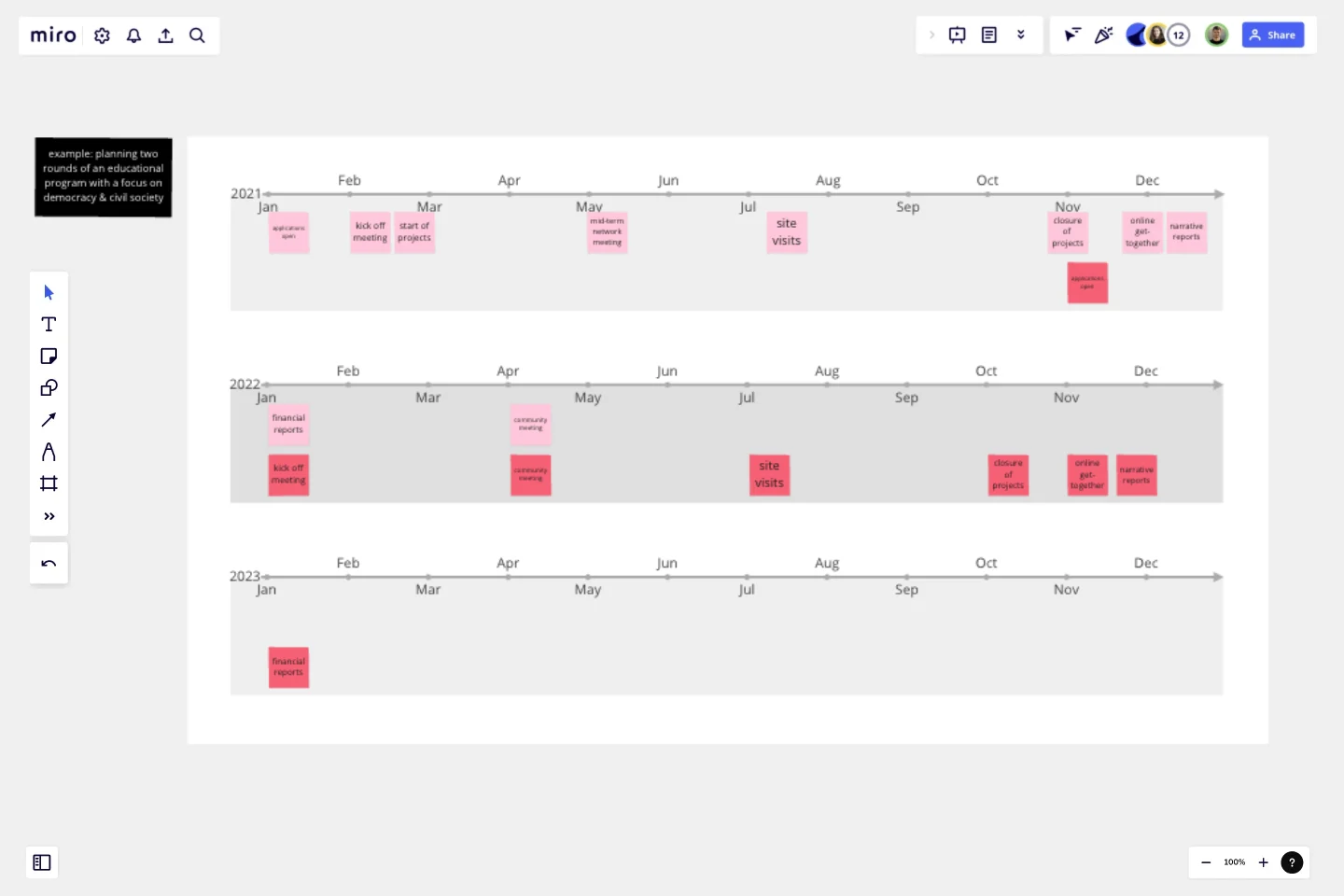Year Timeline Template
This template is useful for outlining milestones of a project/initiative coming to life in the upcoming year(s).
The template would become the first step for strategizing, estimating how realistic the plans are, or explaining complex structures by slicing them into big pieces.
The simplicity of this template is its key advantage: you are not concentrating on details rather getting an overview of the big picture. This “look from the above” allows for planning on meta-level which, in turn, makes you focus on the core meaning, not the package.
The “Year timeline” can help upper management bring their ideas down to their teams to provide them with an overview and ensure the alignment within the team.
This template was created by Ruslan Kildeev.
Get started with this template right now.
4P Marketing Mix Template
Works best for:
Marketing, Brainstorming, Workshops
Product, Place, Promotions, and Price. Starting with this template (and those 4Ps) you can choose the best way to take your product or service to market. The secret is to create just the right mix—deciding how much each P needs in terms of investment, attention, and resources. That will help you build your strengths, adapt to the market, and collaborate with partners. And our tool is the perfect canvas to create your marketing mix and share with teams and across your organization.
Azure Data Flow Template
Works best for:
Software Development, Diagrams
The Azure Data Flow is a diagram that will allow you to combine data and build and deploy custom machine learning models at scale. Azure is Microsoft’s cloud computing platform, designed to provide many cloud-based services like remote storage, database hosting, and centralized account management. Azure also offers new capabilities like AI and the Internet of Things (IoT).
Vision Board Template
Works best for:
Strategy & Planning, Product Development
Miro's Vision Board Template helps teams to bring their vision to life. From visual representation to real time collaboration, this template facilitates planning, execution, and achievement of any project's goals.
Go-to-Market GTM Template | Miro
Works best for:
Marketing, Desk Research, Strategic Planning
It doesn’t matter how innovative or effective a new product is — if it doesn’t get noticed and adopted by the right audience, the product won’t get off the ground. That’s where your Go-to-Market Strategy comes in. It’s a single resource that houses all of your research, insights, and data, and includes your business plan, target audience, marketing approach, and sales strategy. A GTM is especially important for any startups who grow fast, have to make split-second decisions, and have to be fully in sync.
Product Positioning Canvas
Works best for:
Product Management, Planning
The Product Positioning Canvas template aids product managers in defining and communicating product positioning strategies. By analyzing target markets, competitive landscapes, and unique value propositions, this template helps differentiate products in the market. With sections for defining brand attributes, messaging, and market segments, it enables teams to craft compelling positioning statements that resonate with target audiences. This template serves as a guide for aligning product positioning with business objectives and driving market success.
